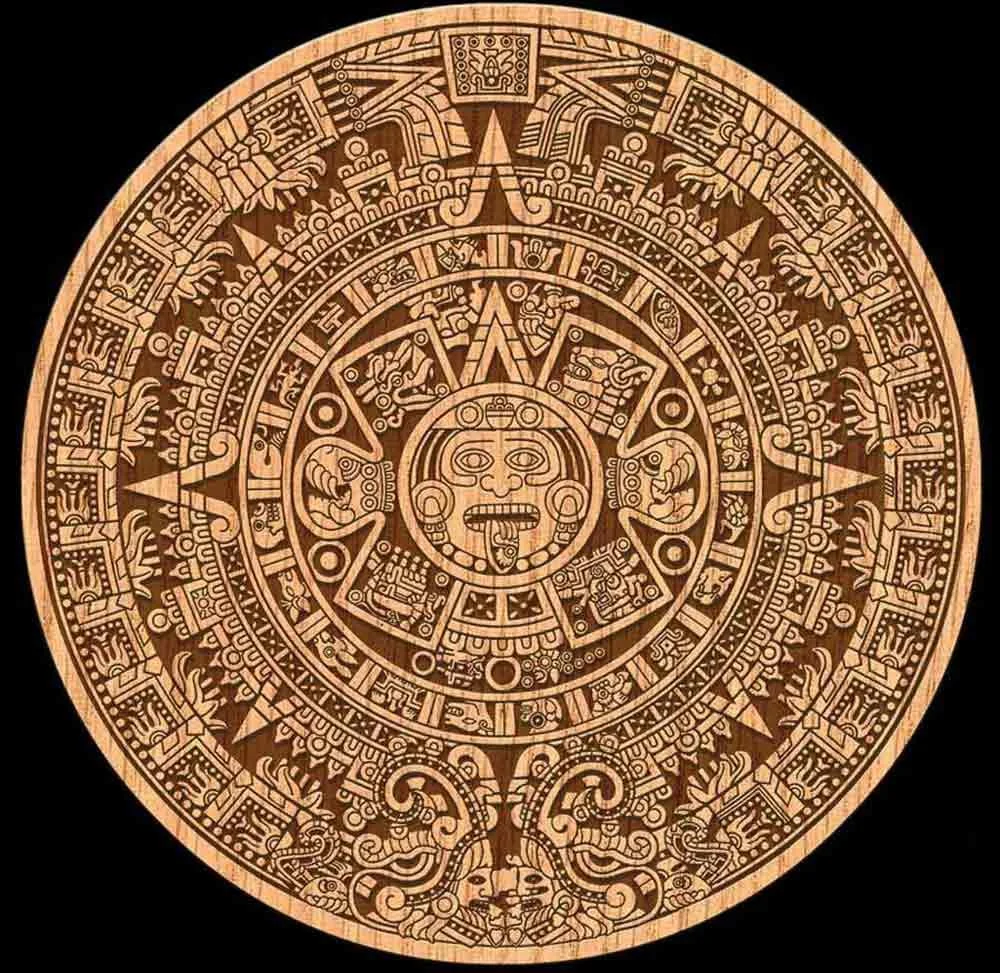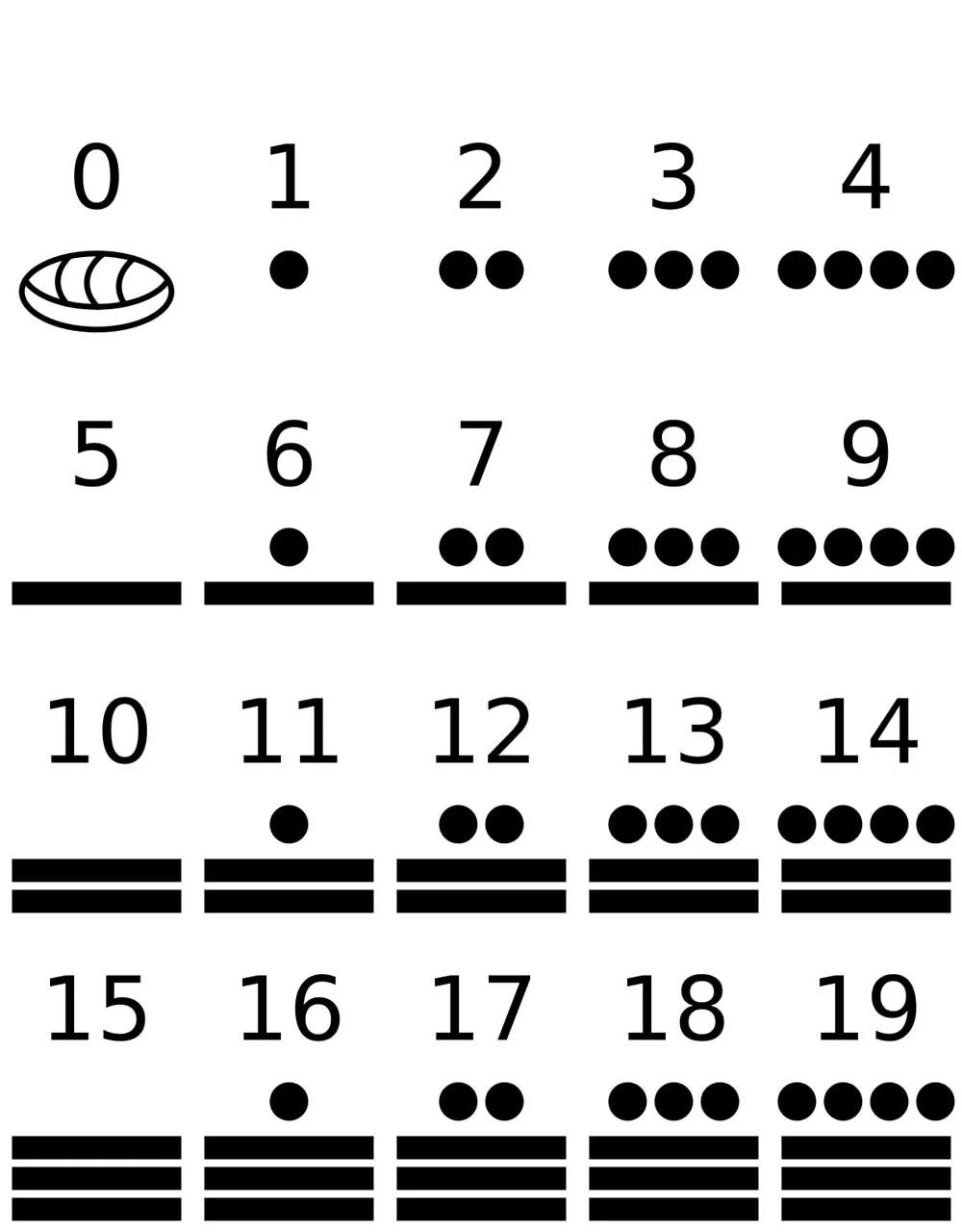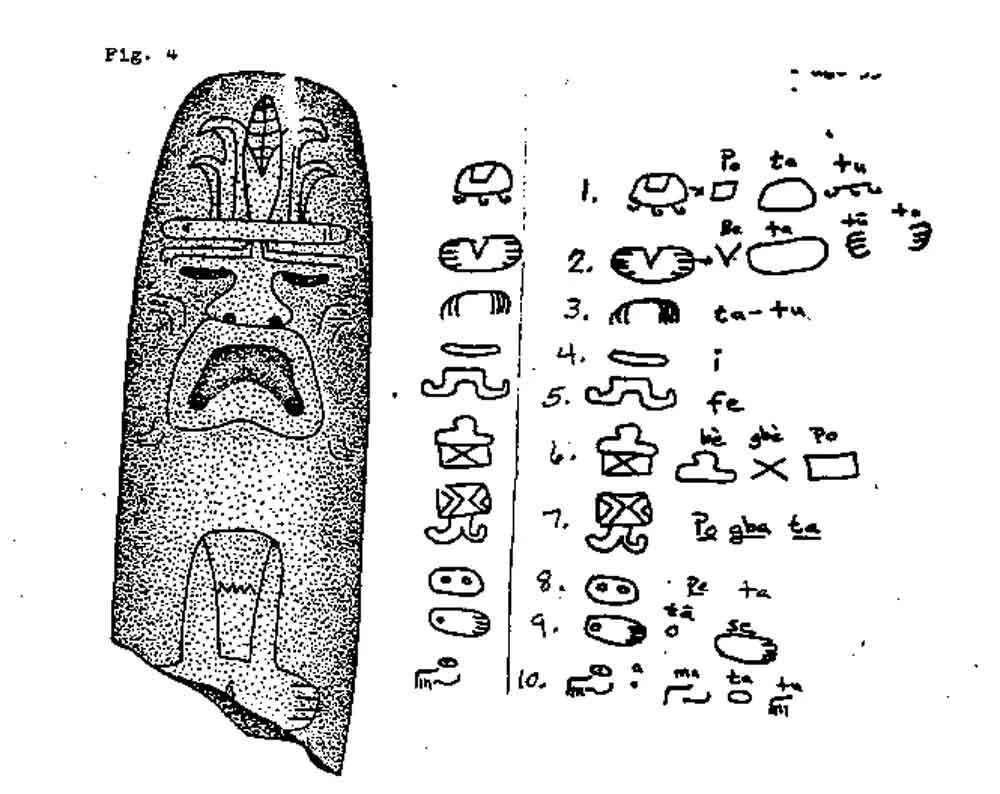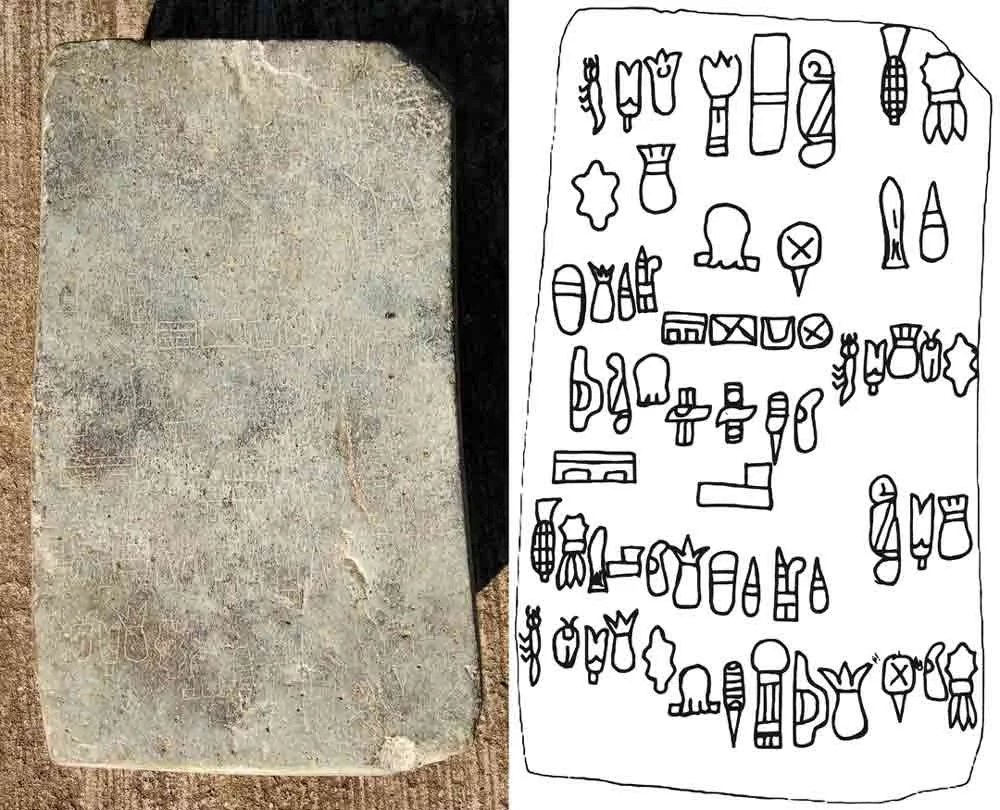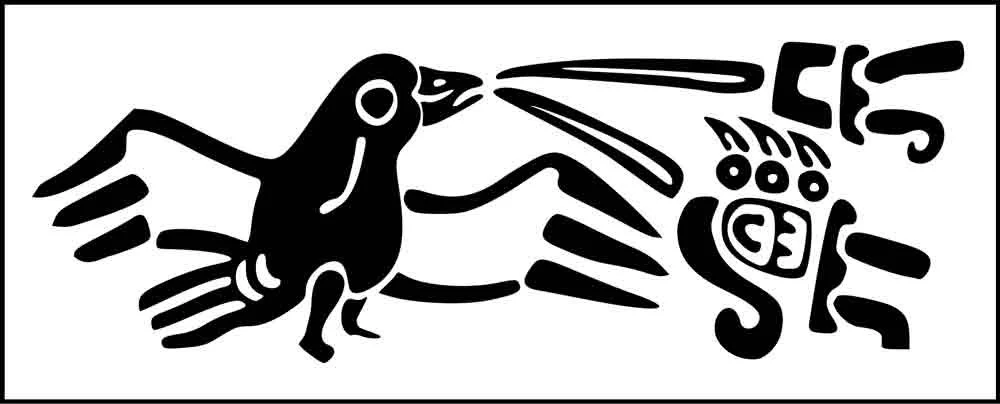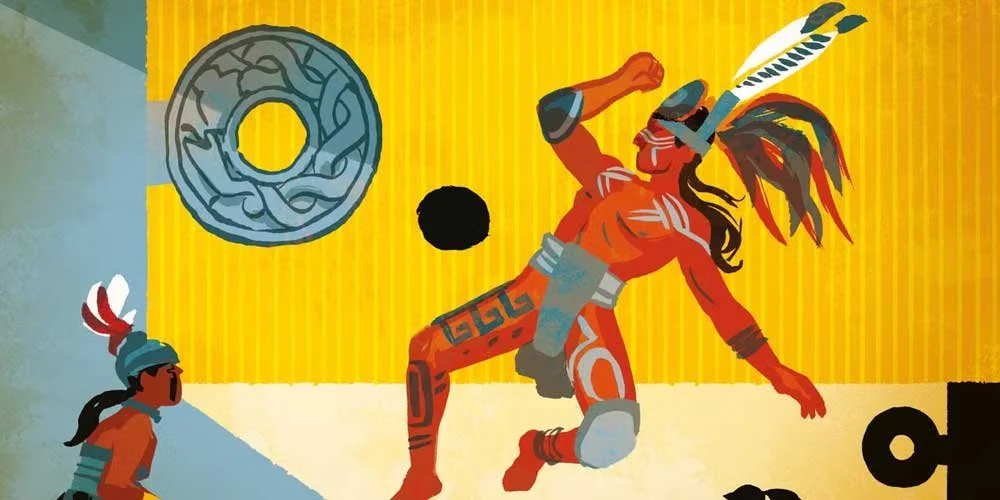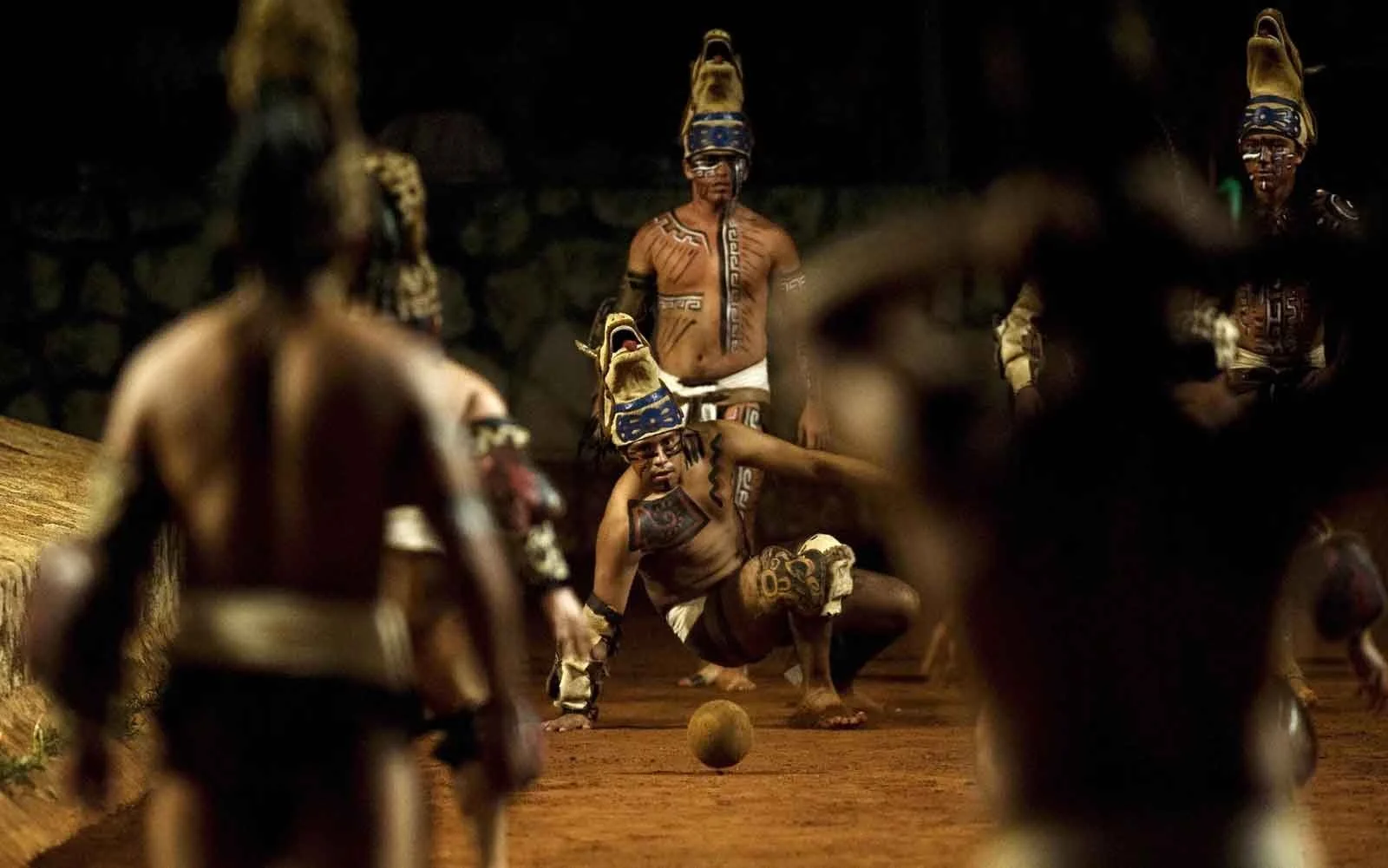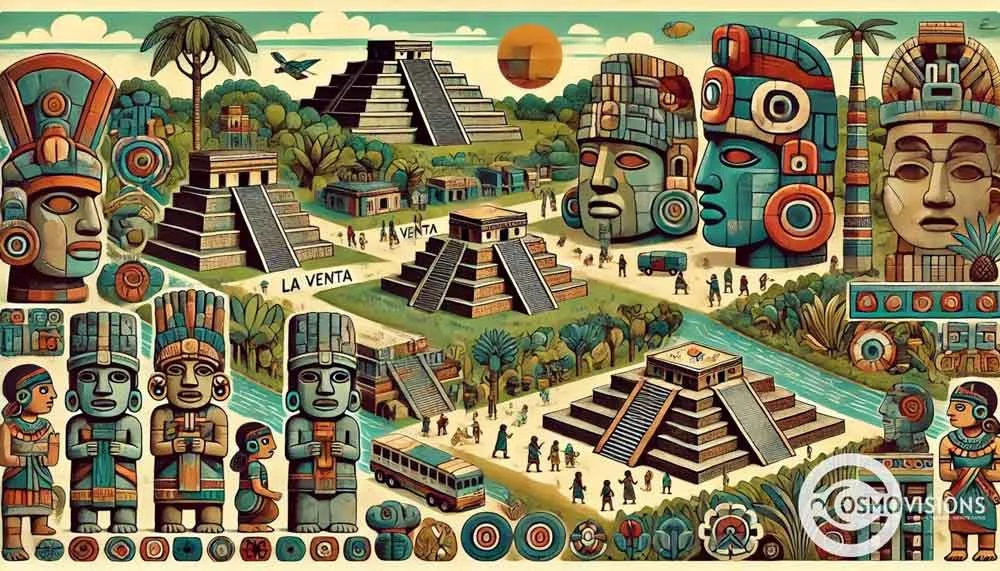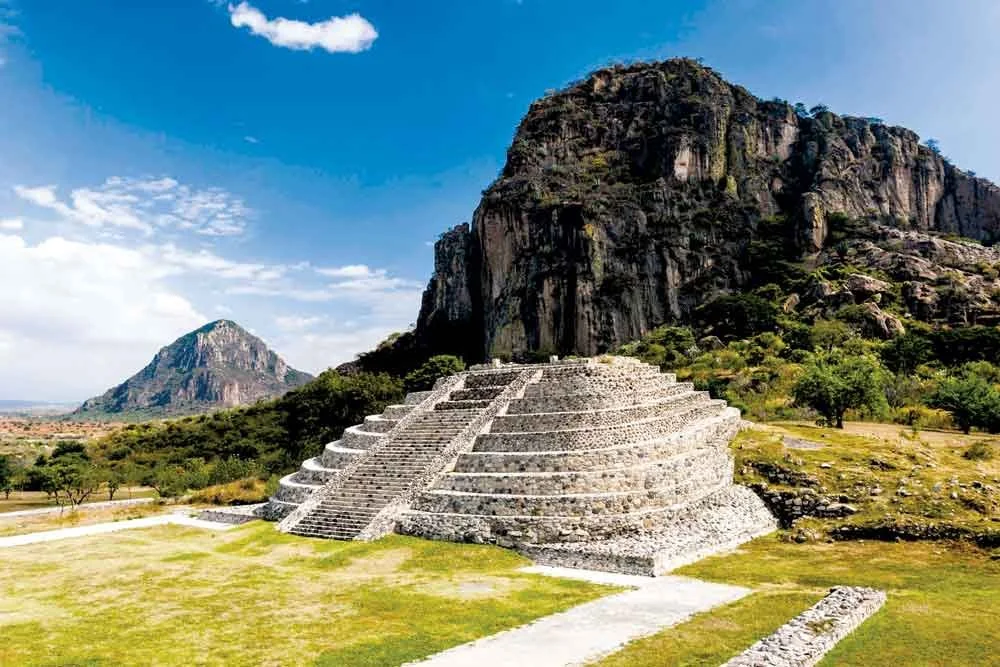THE OLMEC LEGACY: Part 3
START at
STOP at
What is a universal feature of nearly all Mesoamerican cultures?
In ancient civilizations, when counting is being recorded, what usually follows?
Are we able to read Olmec inscriptions?
The Olmecs used a writing system similar to the Egyptians. What do we call that writing system?
What activity was a huge fixture in Mesoamerica?
No one has found an Olmec ball court — yet — but what have they found?
Did the Olmec stick to themselves, ignoring the peoples that lived around them?
Name two things the Olmec produced.
Name two things the Olmec wanted when they traded.
What might we find in the Valley of Morelos?
• READ •
THE OLMEC LEGACY: Part 3
The Olmecs are best known as the creators of Mexico’s first civilization,
and for making some of the country’s most extraordinary works of art.
Mesoamerican Calendar
Religion and art were not the only legacy of Olmec culture. Perhaps one of the greatest Olmec achievements was their use of the Mesoamerican calendar and the Long Count.
There's a lot of debate over the exact source of the Mesoamerican calendar, but the Olmec played a huge role in spreading it across Mesoamerica.
The calendar was a universal feature of nearly all Mesoamerican cultures and it underpinned all ceremonial and religious life. We see this calendar used by the Maya, the Mixtec, the Aztecs, the Zapotecs, and others. To say it was widespread and successful is an understatement.
Not only that, the Olmec also had a written numerical system with which they could write dates.
This allowed the Olmecs to do something no one else could do - to record their history in writing.
Writing
Now the ability to write numbers poses another important question.
Usually when counting is being recorded, writing usually follows. Did the Olmecs follow this progression to writing and spread to other areas of Mesoamerica? Now that's a question fraught with a lot of debate.
You see, writing pops up in the late formative period in multiple places - the Olmec Heartland, the Valley of Oaxaca, and the Maya Highlands. But a common ancestor of these scripts is elusive and there's very little consensus over who came first, who influenced the other. It's very much open for debate.
During this time, Olmec writing was abundant. The Epi-Olmec were writing elaborate monumental inscriptions. The best example is the La Mojarra Stela from the Tres Zapotes area.
• The La Mojarra Stela from the Tres Zapotes area.
This enormous basalt stela shows a figure, most likely a ruler, next to a lengthy inscription. We can tell from the date inscription on the stela that it's from the end of the late formative period.
Unfortunately, the script remains undeciphered and all attempts to decipher it have been unsuccessful.
But as cool as that is, we need to dig deeper to find the earliest Olmec writing. If you want to go back as far as possible to witness the purported origins of writing, you'll arrive at the Cascajal Block that was found near the Olmec city of San Lorenzo.
• Cascajal Block (about 1000-900 BCE).
It features several rows of hieroglyphs. Although the nature of these glyphs is disputed by some scholars, this block dates from about 1000 and 900 BCE. But the hieroglyphs do not resemble any other Mesoamerican script. Could this be a proto-script or possibly a dead end? It's hard to say.
But the most compelling artifacts come later from the La Venta area. The first we will examine is a cylinder seal found in 2002 that dates to approximately 650 BCE.
• Cylinder seal (650 BCE).
What makes this seal so interesting is that it contains a bird with a speech scroll coming from its mouth that ends in two hieroglyphs, just like a character in a comic strip. These two hieroglyphs are similar to those of later Mayan and Isthmian writing.
Greenstone fragments from the site show glyphs with similarities to other scripts as well. An Olmec statue found in La Blanca on the Pacific Coast, far away from the Olmec heartland, shows similar hieroglyphs as well.
With this in mind, some scholars believe that there's an argument to be made that writing first originated in the Olmec heartland and then was dispersed throughout Mesoamerica. It should be noted once again that these claims are a bit controversial and the matter is not settled.
Any day now a new discovery could easily change how we see the origins of Mesoamerican writing. What is clear is that the Olmec were early adopters of writing and helped spread literacy throughout Central America.
PLAY BALL!
Another cultural legacy of the Olmec is the Mesoamerican ballgame.
The ballgame was a huge fixture in Mesoamerica. Ball courts were a regular feature in urban design all over Mesoamerica and even beyond. If you've ever seen the ruins of a Mesoamerican city, you've probably seen the remains of a ball court. They're very distinct with their I-shape, their walls, and the alleyway between them.
The ball game was not just a sport to pass the time.
It was an important religious ritual that recreated mythology and brought communities together. A ball game symbolized the battle between good and evil and life and death, and usually culminated in the sacrifice of the losing captain or maybe even the losing team.
Like the calendar, it's possible that the ball game may have origins outside the Olmec heartland. No Olmec site has ever yielded a ball court. The oldest known ball court actually comes from the distant Soconusco region.
However, at the Olmec site of El Manati, rubber balls have been found dating back to 1500 BCE and these are the earliest ever found.
• Rubber balls have been found dating back to 1500 BCE.
These solid rubber balls were made by tapping rubber trees and fashioning the rubber into balls for the game. This is good evidence that the game was being played by the Olmec from a very early time, even if they weren't incorporating formal ball courts into their urban architecture - or perhaps they were and archaeology has yet to find them.
Either way, the Olmec were among the earliest cultures playing the ball game in Mesoamerica.
IDEAS SPREAD
So how do we know that these ideas were spread so thoroughly throughout Mesoamerica?
So how do we know that these ideas were spread so thoroughly throughout Mesoamerica? You might think it's because we see so many firsts among the Olmec, but the real reason is much more interesting. It's because Olmec artifacts and sites can be found all over Mesoamerica.
The Olmec were not isolationists. They expanded and traded with their contemporaries all across Central America.
The Olmecs were producing rubber, cacao, salt, and manufactured goods like fine pottery. The items they appeared to be trading for were jade and serpentine for crafting, obsidian for weapons and tools, and iron ore for mirrors. And this contact wasn't incidental. There's a lot of evidence for intense Olmec contact outside the heartland.
A great example of this is the site of Chalcatzingo in the Valley of Morelos.
• Chalcatzingo in the Valley of Morelos
That sheer mountain you see in the picture has long been considered sacred by indigenous peoples and the Olmec may have considered this a sacred site as well.
Between 700 and 500 BCE, the Olmec had a strong presence there and left spectacular bas-relief carvings into the rock cliffs.
The location of Chalcatzingo also lies about halfway between the heartland and the mountain sources of obsidian. It would have behooved the Olmec to ensure that Chalcatzingo was on friendly terms.
Ancestor - A person from whom you are descended; a relative from long ago
Bas-relief - A type of sculpture where figures are carved to stick out slightly from a flat background
Cacao - The plant whose seeds are used to make chocolate
Culminated - Reached the highest point or final result
Cylinder seal - A small stone tube with carved pictures that was rolled over clay to make marks
Decipher - To figure out the meaning of something written in code or unknown symbols
Elusive - Hard to find or catch; difficult to understand
Fraught - Filled with or causing worry, difficulty, or danger
Hieroglyphs - Picture symbols used in ancient writing systems
Isolationists - People who keep to themselves and avoid contact with others
Legacy - Something important that is passed down from earlier times
Literacy - The ability to read and write
Obsidian - A hard, black volcanic glass used to make sharp tools and weapons
Proto-script - An early form of writing that came before fully developed writing systems
Underpinned - Supported or formed the foundation of something
► COMPREHENSION QUESTIONS
— please answer with complete sentences
What is a universal feature of nearly all Mesoamerican cultures?
In ancient civilizations, when counting is being recorded, what usually follows?
Are we able to read Olmec inscriptions?
The Olmecs used a writing system similar to the Egyptians. What do we call that writing system?
What activity was a huge fixture in Mesoamerica?
No one has found an Olmec ball court — yet — but what have they found?
Did the Olmec stick to themselves, ignoring the peoples that lived around them?
Name two things the Olmec produced.
Name two things the Olmec wanted when they traded.
What might we find in the Valley of Morelos?







